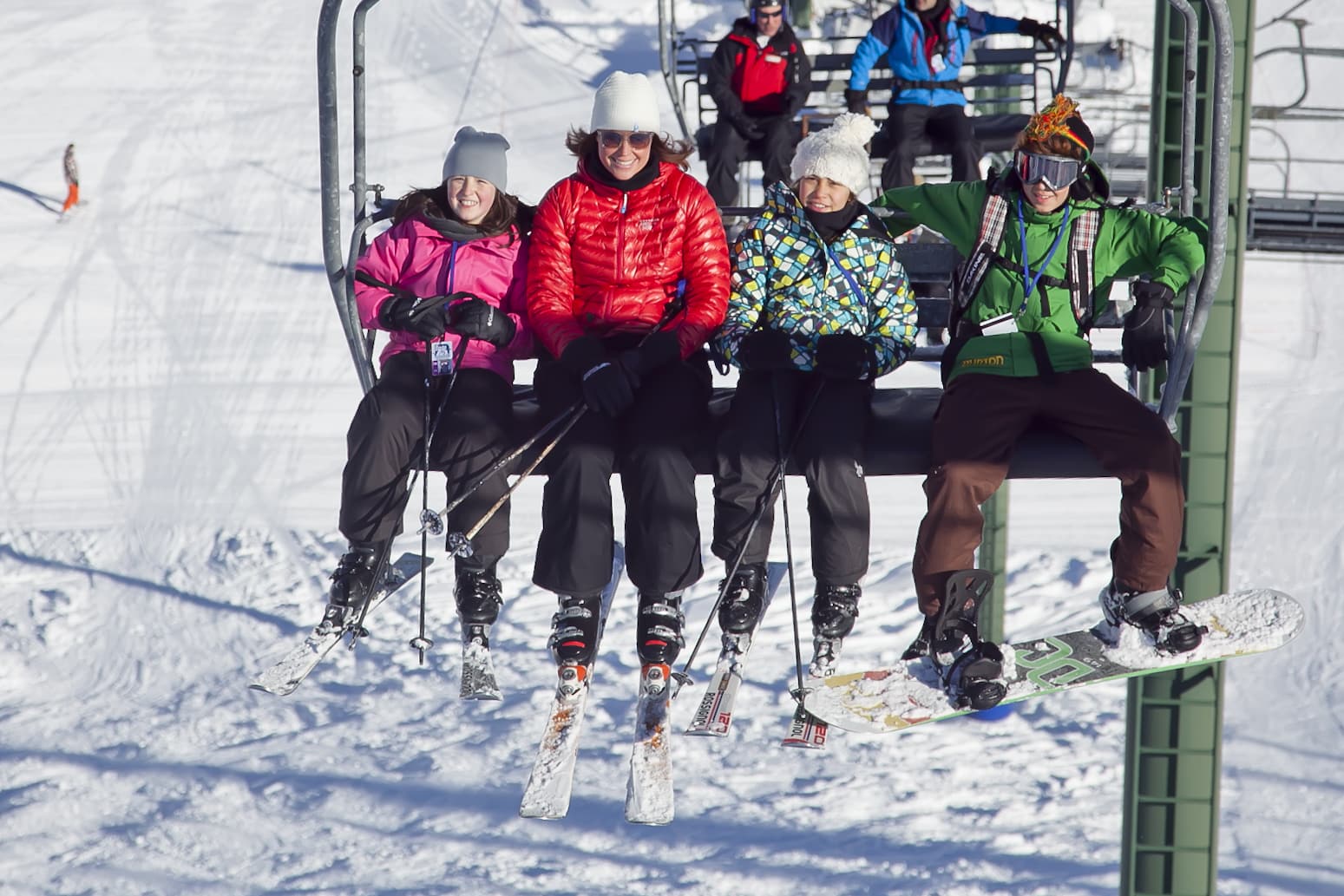When to Arrive & Where to Go:
If anyone in your group needs lessons, please check in at the Ski and Ride School upstairs in the lodge. We offer some great discounted lift, lesson and rental packages. We can also sell lift tickets and rentals for family members who are not in Ski and Ride School. We open around 8:15 am.
Weekends & holidays – Please plan to arrive about 90 minutes before the start of your lesson. It always seems to take longer than you think it will to get everyone situated. We want to help you avoid the frustration of racing to get to your lesson on time.
Mid-week – Please plan to arrive about 60 minutes before the start of your lesson.
Group lessons start promptly at 10 am and 1 pm. Registration cut-off times are about 15 minutes before lesson time. This allows time to get down to the teaching area. If you need rental equipment that takes even longer — it can take up to half an hour or more to get everything properly fitted and arranged.
Leaving home early will allow you time to deal with traffic, inclement weather, and winter driving conditions. Remember that once you arrive, you will need time to check in at the Ski & Ride School window behind the big white tent in the parking lot and get rentals (if needed).
Lesson Start Times – Weekends & Holidays:
Please be outside in our Teaching area, dressed and ready to go 5-10 minutes early.
Group lessons – Start outside at 10 am and 1 pm.
Mt. Cubs – Begin in Cubs Room at 9:30 am and 12:30 pm.
Private lessons – Available 9:00am to 3:00pm on the hour – reservations are advised and available ahead of time with prepayment. (There is a $25 charge for private lesson cancellations with less than 24 hours notice.)
Lesson Start Times – Midweek:
Please be outside in our Teaching area, dressed and ready to go 5-10 minutes early.
Group lessons – Start outside at 10 am and 1 pm.
Private lessons – Available at 9 am, noon, and 3 pm.
Bike & Trikke Lessons:
Available at 9 am, noon, 3 pm – weekends, holidays, & mid-week.
What You Should Wear While Skiing and Snowboarding:
Clothing appropriate for the mountains will help insure that you will enjoy your skiing or snowboarding experience. Keep your body warm by dressing in layers that will allow you to customize according to the weather and temperature.
Base Layer: Polypropylene is most effective for maintaining body heat and drawing moisture away from the body. Conventional long underwear also works, but AVOID COTTON! When it gets wet, it stays wet and you WILL get cold!
Insulating Layer: Fleece works great! Wool is also good. Down and synthetic down insulating layers also work quite well. AVOID COTTON!
Outer Layer: Waterproof breathable ski or snowboard coats and pants are recommended! Insulated coats like Down or Synthetic Down also work well. NO BLUE JEANS! AVOID COTTON!
Socks: One pair of thin wool or polypropylene socks is all you need. More doesn’t add warmth but does increase wrinkles, and that can mean blisters and lack of circulation which can make you feet cold! You may want to bring a spare pair for when you are done skiing.
Hats/Helmets: Fleece and wool are recommended. A thin balaclava works great underneath a helmet. Helmets should fit snug but not be too loose or too tight. AVOID COTTON!
Face: Your cheeks, nose, and mouth can be protected with a neck gaiter, scarf, face mask, or balaclava. AVOID COTTON!
Gloves: Hands are usually the first part of the body to get cold. Waterproof gloves or mittens are essential for keeping your hands warm and dry. Mittens are warmer, and gloves are more versatile. A loose fit allows for good circulation. NO COTTON!
Eyewear: Eye protection is crucial to good visibility and safety, which is critical when skiing. Goggles are best because they protect the eyes from the elements of winter – sun, wind, and blowing snow. Sunglasses are better suited for milder weather and sunny days. We absolutely require minors to have and wear eye protection.
Sunscreen: Always wear sunscreen and lip protection of SPF 15 or more when skiing, even if it’s cloudy.


